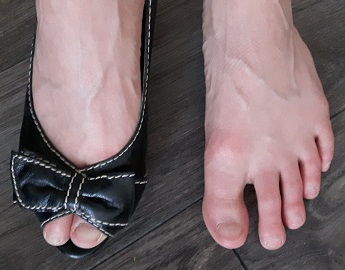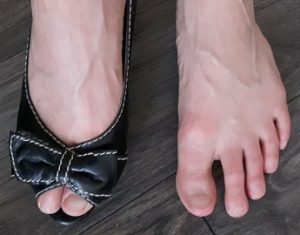
Finding a comfortable dress shoe
Finding a comfortable dress shoe that you can wear for extended periods of time can be difficult. Most dress shoes focus on fashion before comfort, which leads to an uncomfortable shoe. There are ways to find a more stylish shoe while keeping comfort in mind. While you may not find every feature listed in your dress shoes, having more of these features provides a more comfortable experience!
Proper size
One of the easiest ways to improve comfort is to wear a shoe with the proper size. Make sure there is about a thumb width (~1/2”) space between the end of the longest to and the end of the shoe. The extra space is necessary because when we stand and walk, the feet spread out and slide towards the end of the shoe. The toes should not be hitting the end of the shoe when standing and walking.
Finding the appropriate width in a dress shoe is harder to find, but is important to improve comfort. The easiest way to find the correct width is to find a brand that carries multiple widths (ex. B, D, EE or M, W, XW). When the width doesn’t fit properly, people tend to buy shoes that are too big or too small in the length in an attempt to fit the width. If the width is too small, it can cause pain at the ball of the feet. If the width is too big, it can cause sliding in the shoe.
 Toe shape
Toe shape
The shape of the shoe at the toes can prevent pain from developing at the ball of the foot and toes. Make sure the toe shape of the shoe is the same as your foot shape. This means if the shoe points or narrows at the toes, this can push the toes together and create pain. There are some shoes that will start to point after the toes, which can create that pointed toe look without developing pain. These shoes will seem to fit much bigger as the end of the shoe would need to be longer.
Another solution to improve the toe fit, is to wear a dress shoe with an open toe. An opened toed shoe will prevent the toes from getting pushed together.
Footbed
Finding a comfortable footbed (part that your foot touches) is a great way to improve comfort. The ideal situation is to find a shoe with a removable insert. This will allow you to change the insole to something more comfortable or supportive (custom orthotic or over the counter insert). Also, removable inserts tend to be thicker, which provides more cushioning.
For footbeds that are removable and non-removable, finding the most comfortable footbed will make a big difference. Find a footbed that is thick and cushioned. If possible, find one with additional cushioning around the arch of the foot, the heel and potentially the ball of the foot. These are the areas that would benefit from extra cushioning or material.
Heel height
The heel height of a shoe plays a role in comfort as it redistributes pressure on the foot. A higher heel will add extra pressure to the ball of the foot and lead to pain. If opting for a heel, look for one that is lower and avoid the higher heels. A very small or no heel would be the best option if possible.
Modifications
In some cases, shoes can be modified to improve comfort. If a shoe is too wide or narrow, the shoe can be stretched or extra material can be added to fill up the front of the shoe. These modifications can only go so far, and will only reduce slight discomfort.
Sometimes, extra arch support or cushioning can be glued into a shoe. This would make the cushioning permanent to that shoe. Depending on the existing material in the shoe, these modifications may come unglued quickly. These modifications could be made for long-term or short-term solutions.
For more information, contact us or book an appointment!

You must be logged in to post a comment.